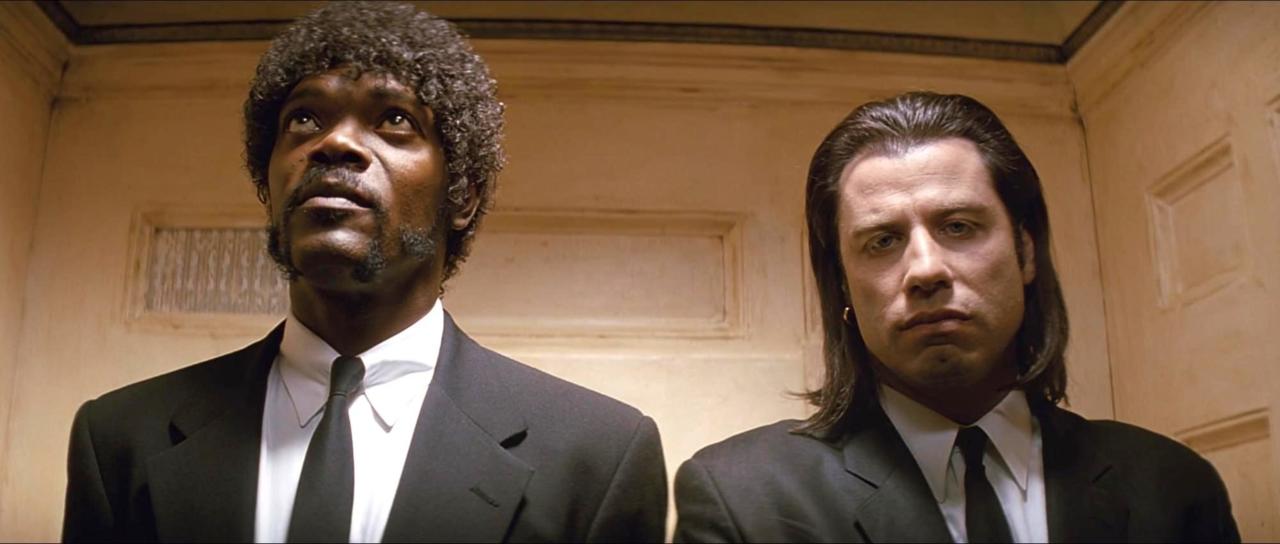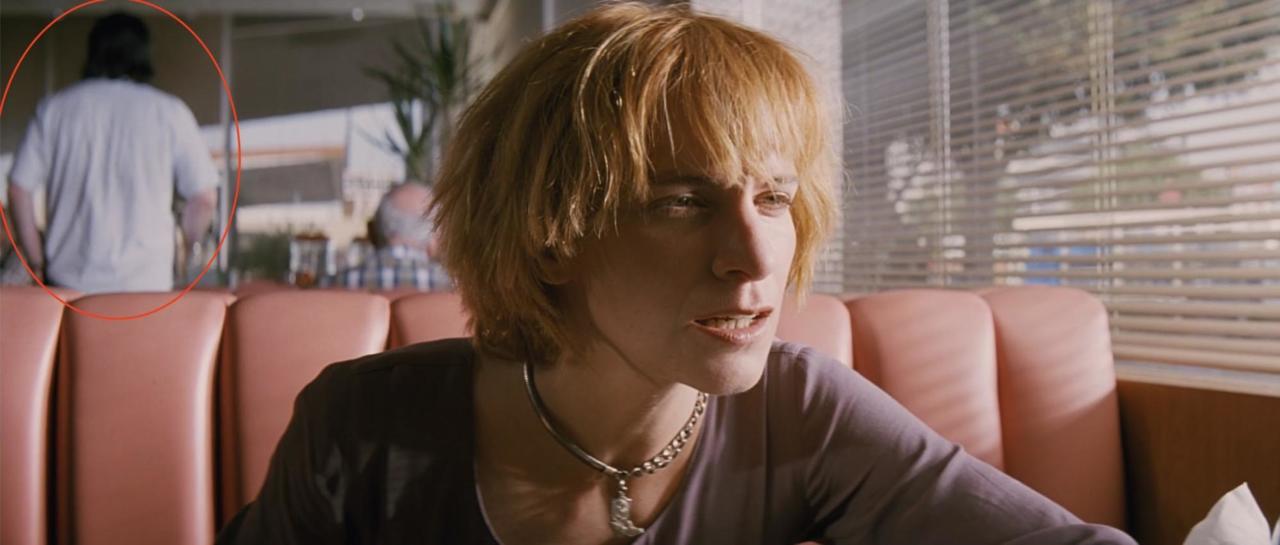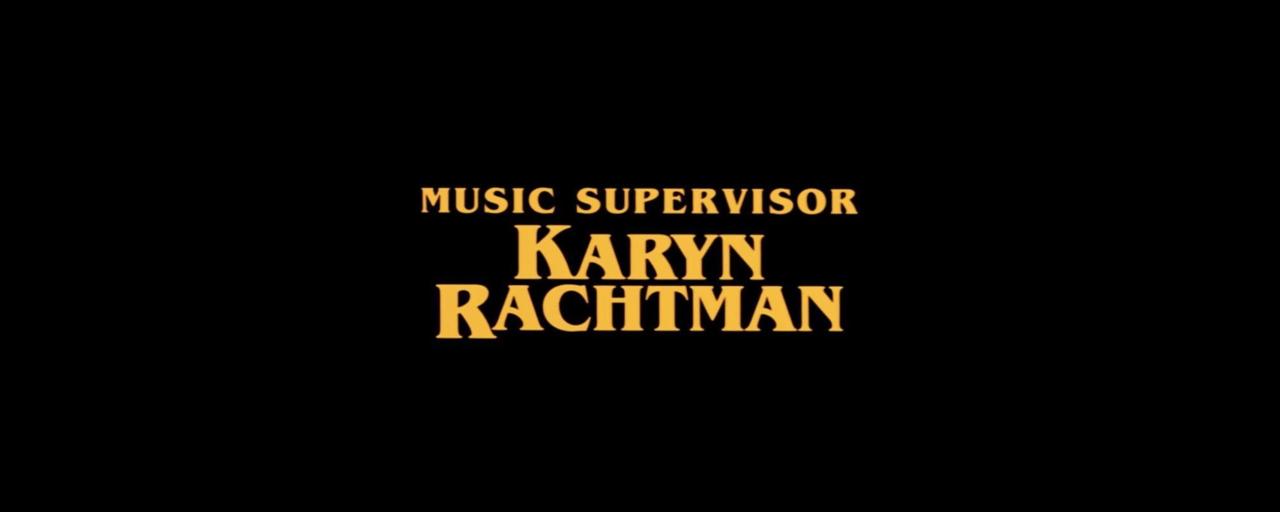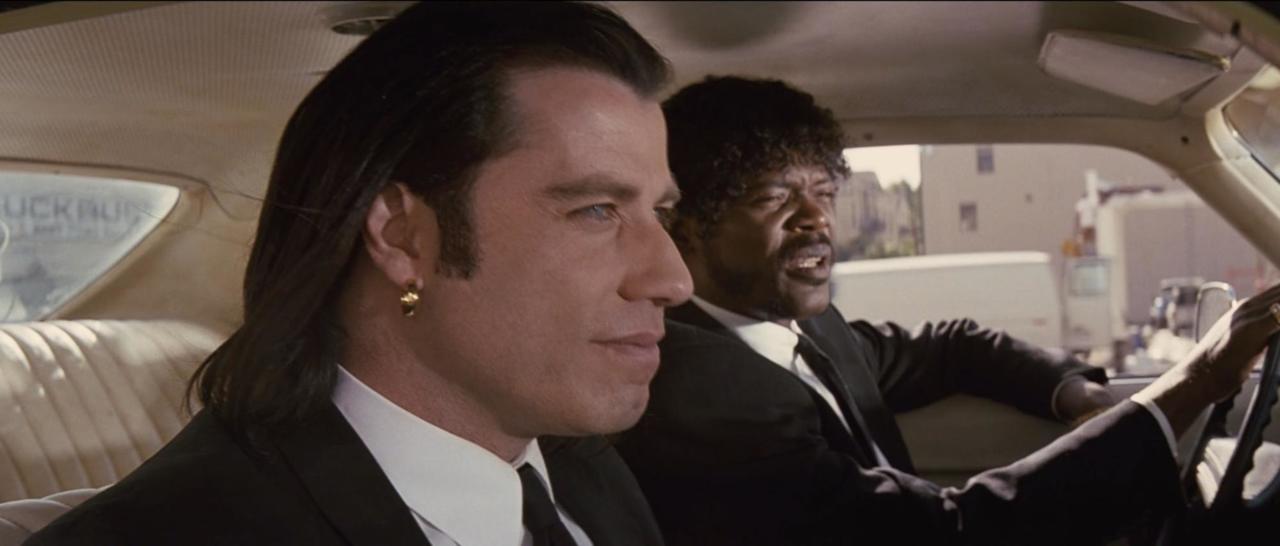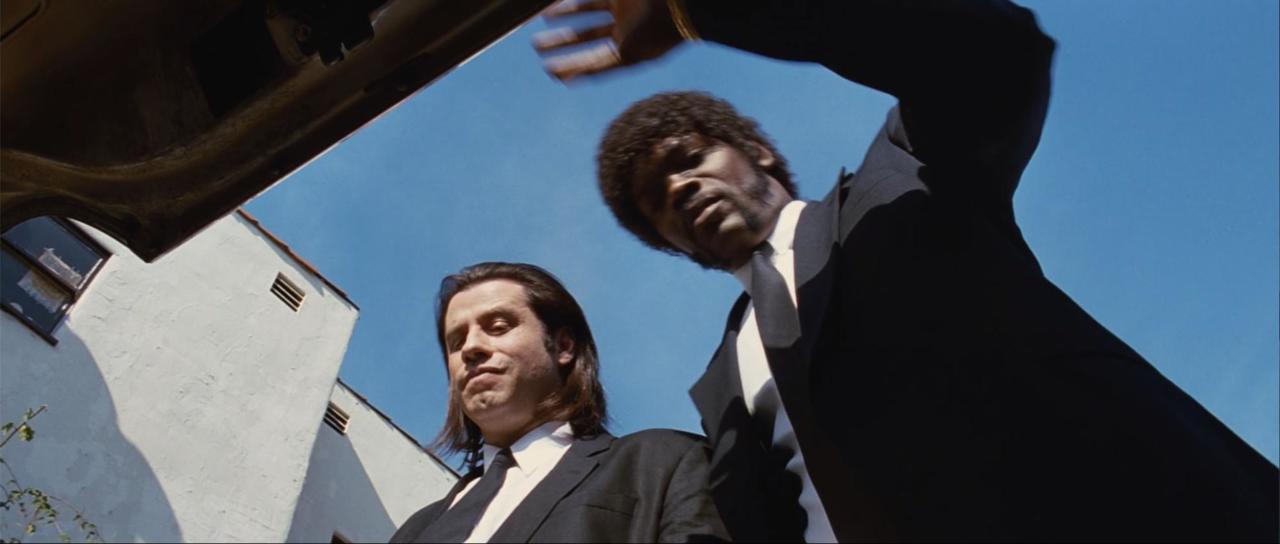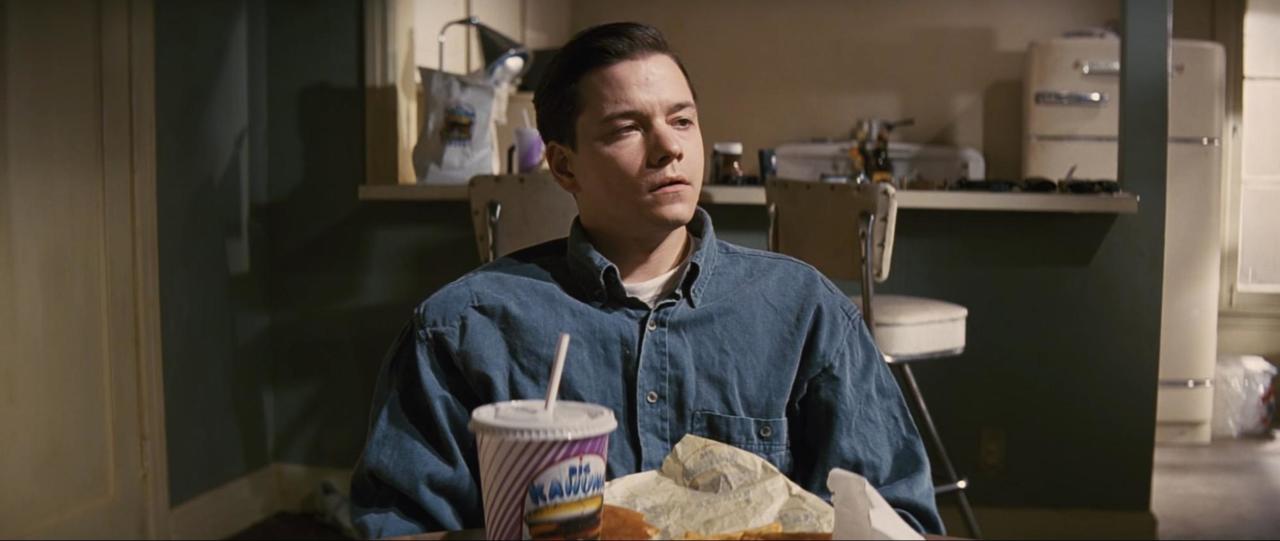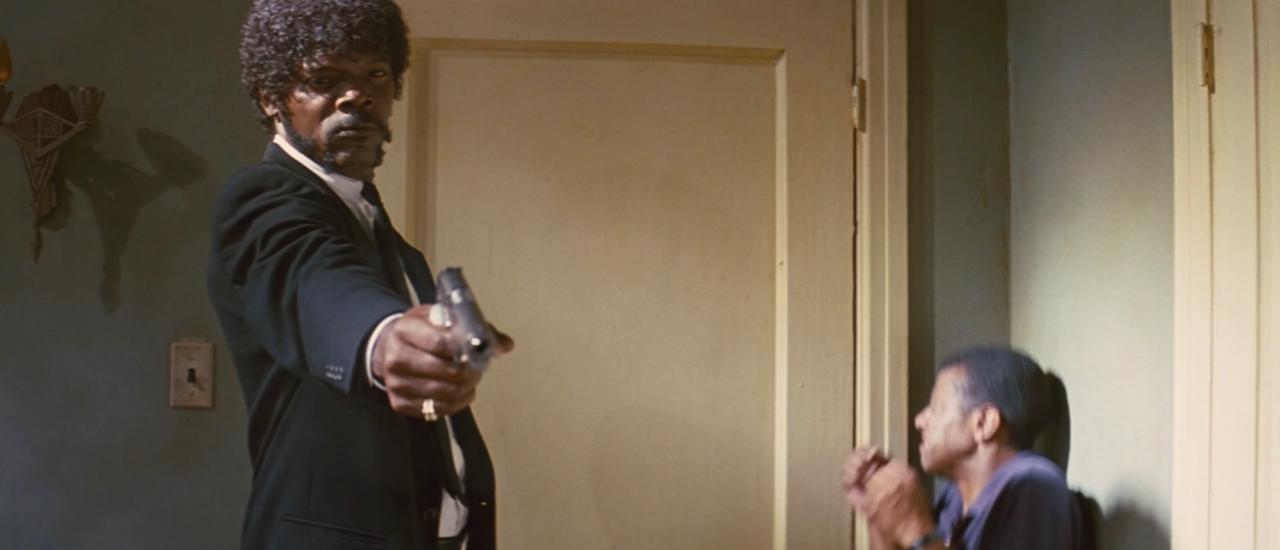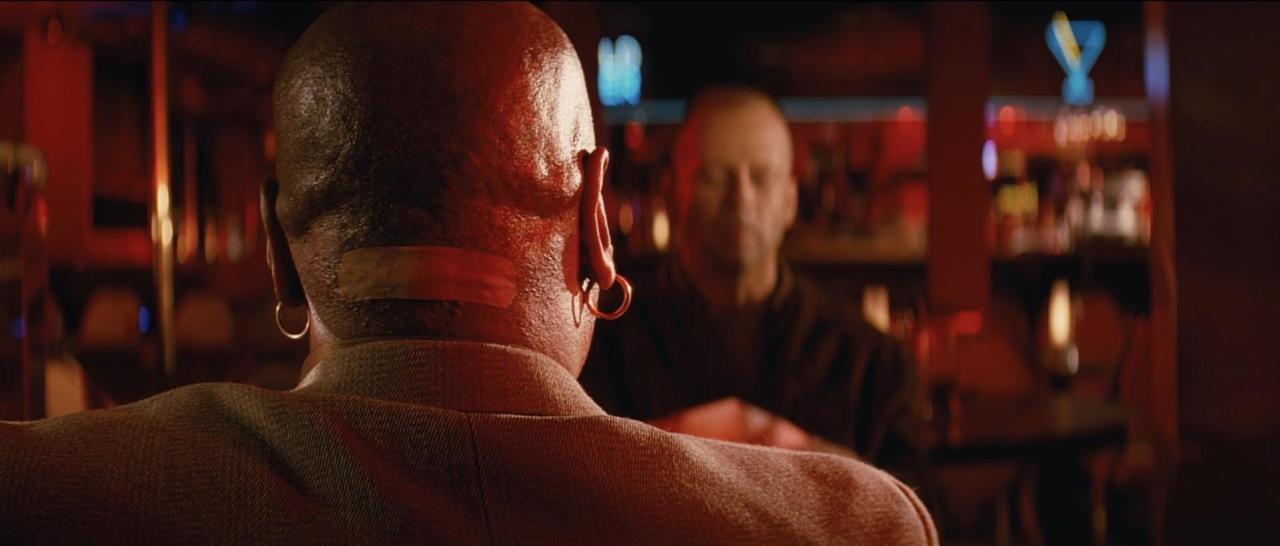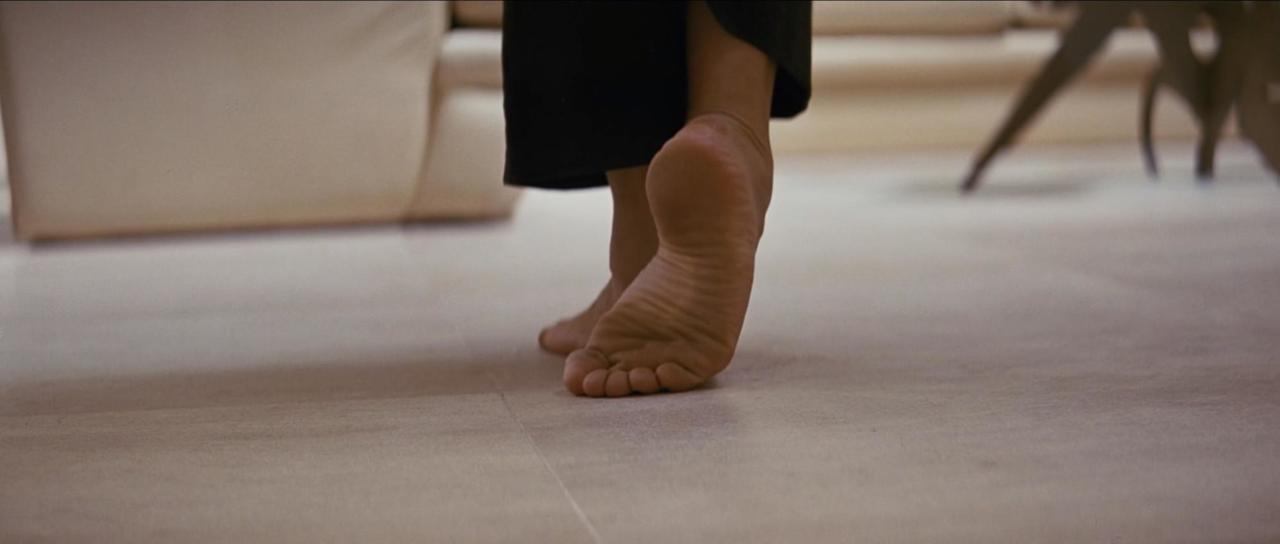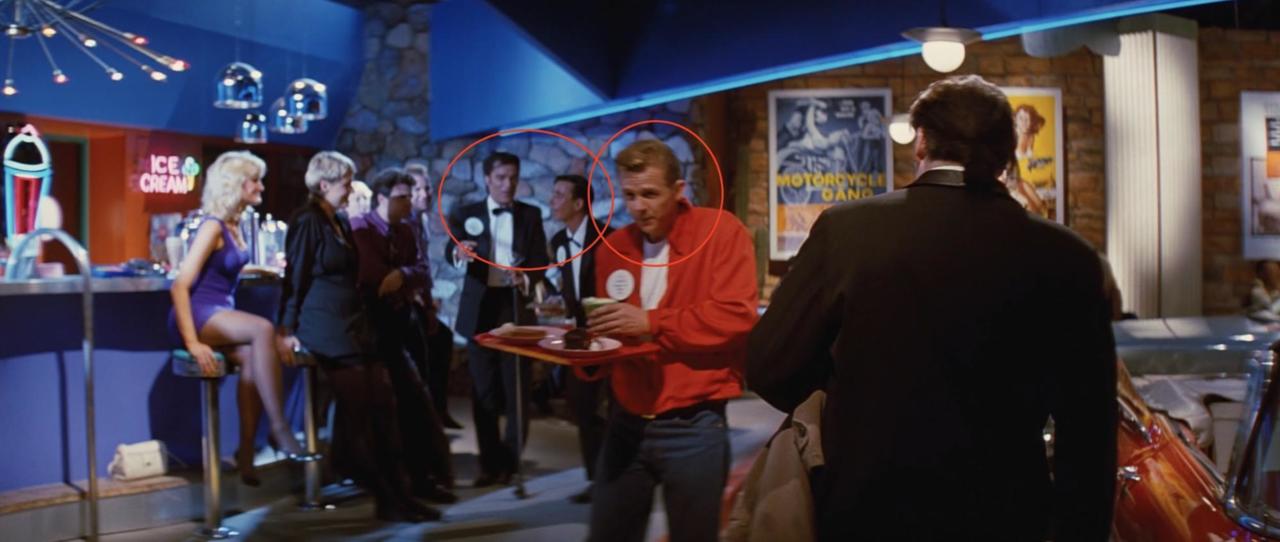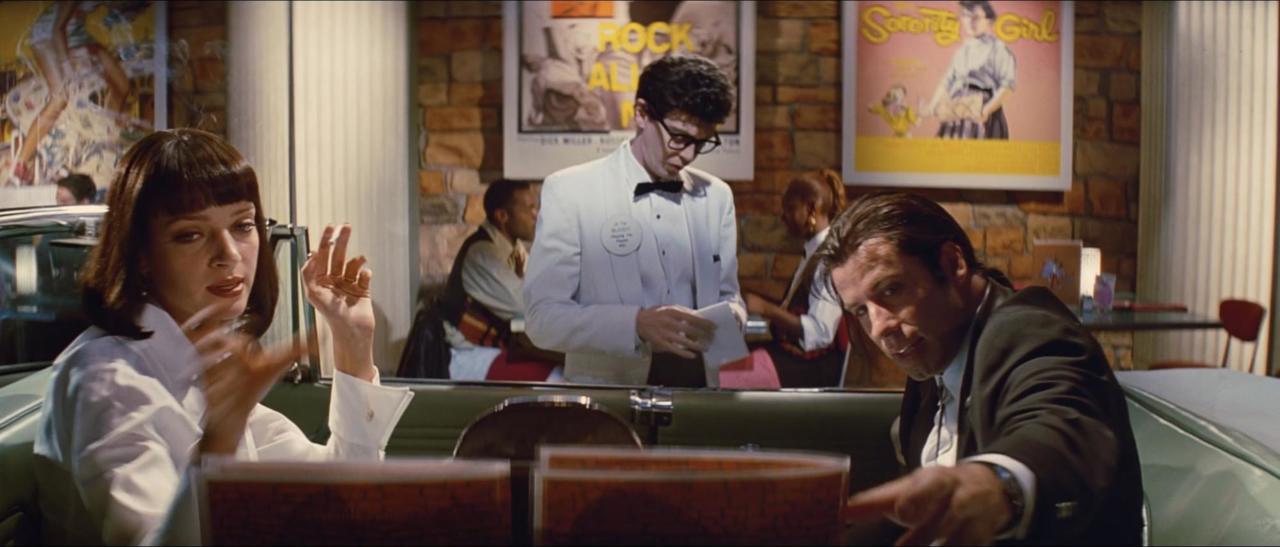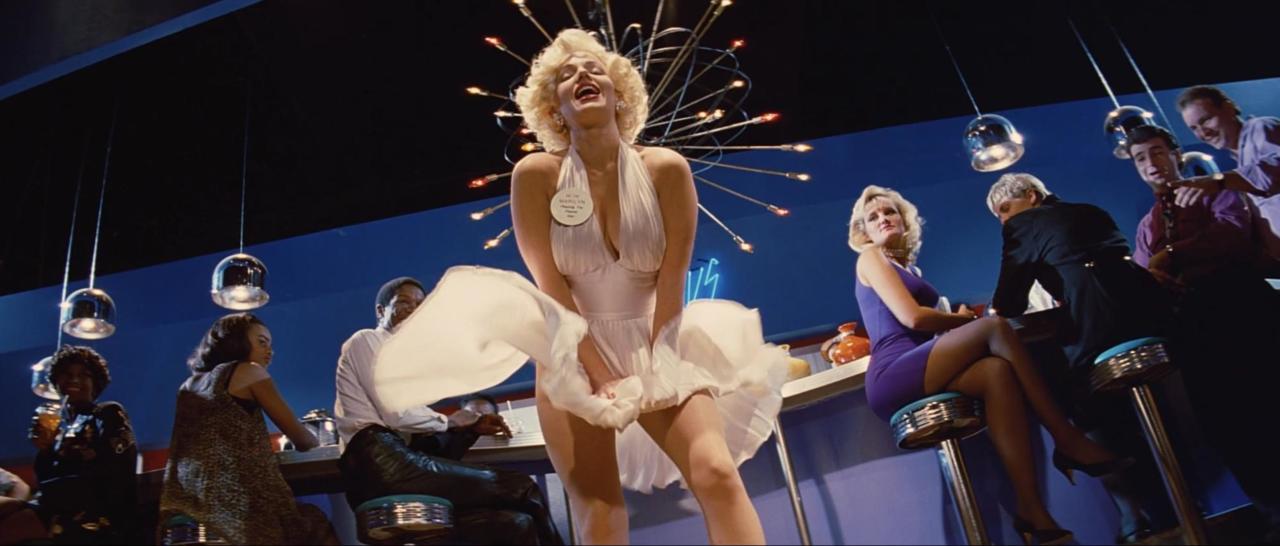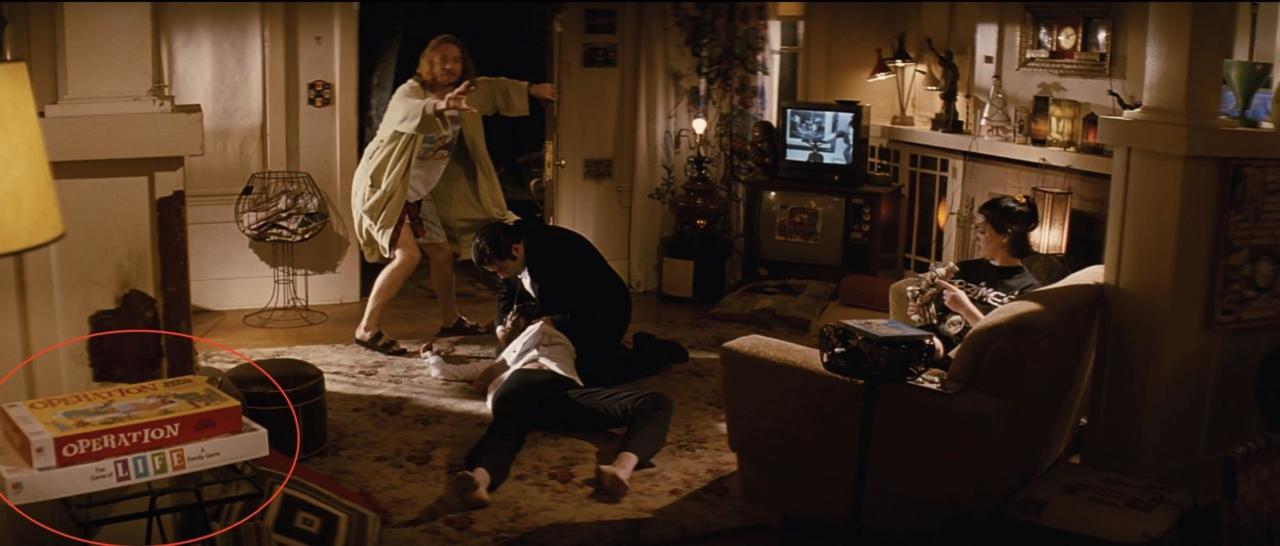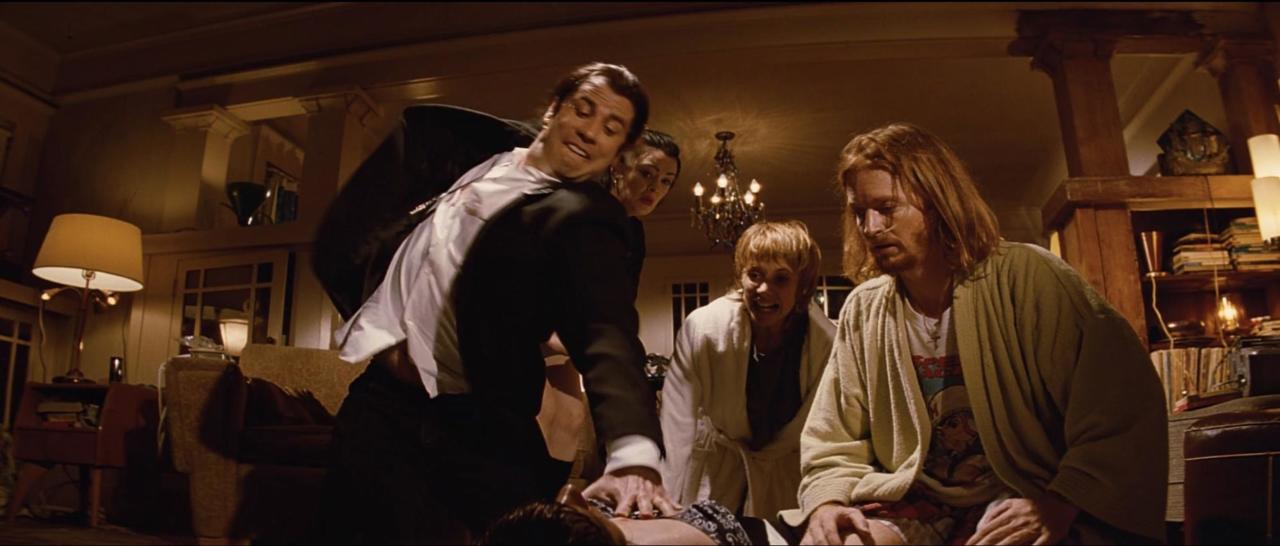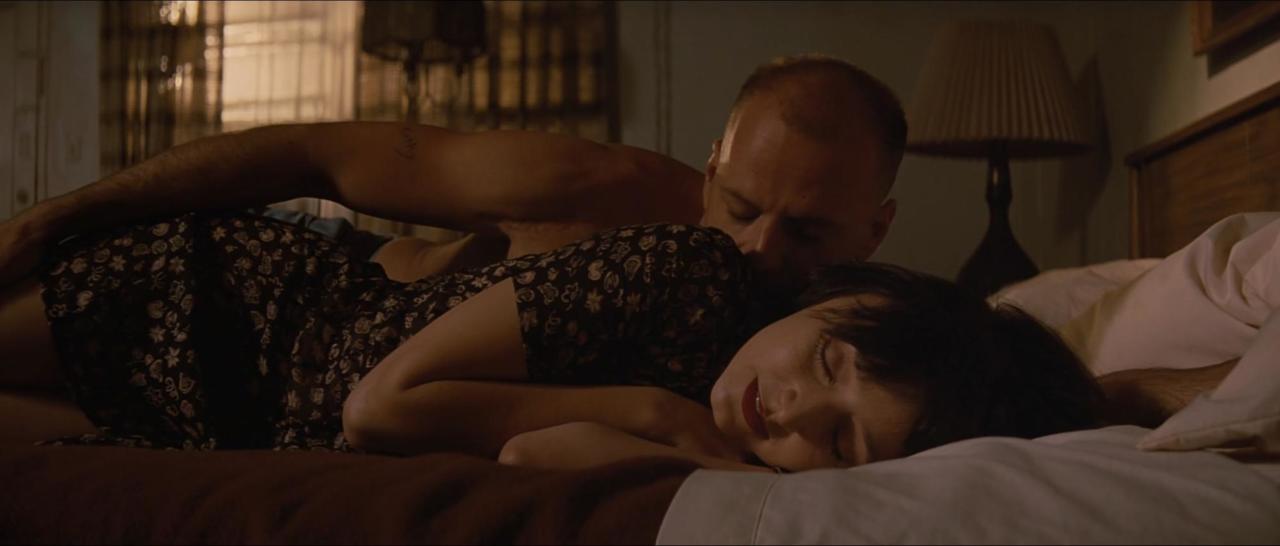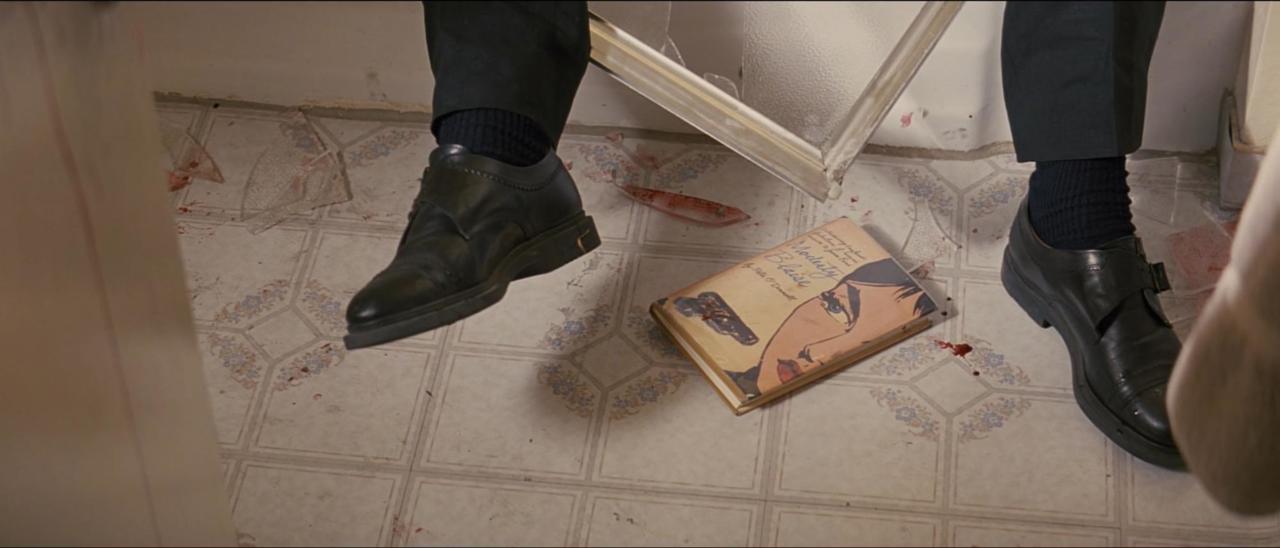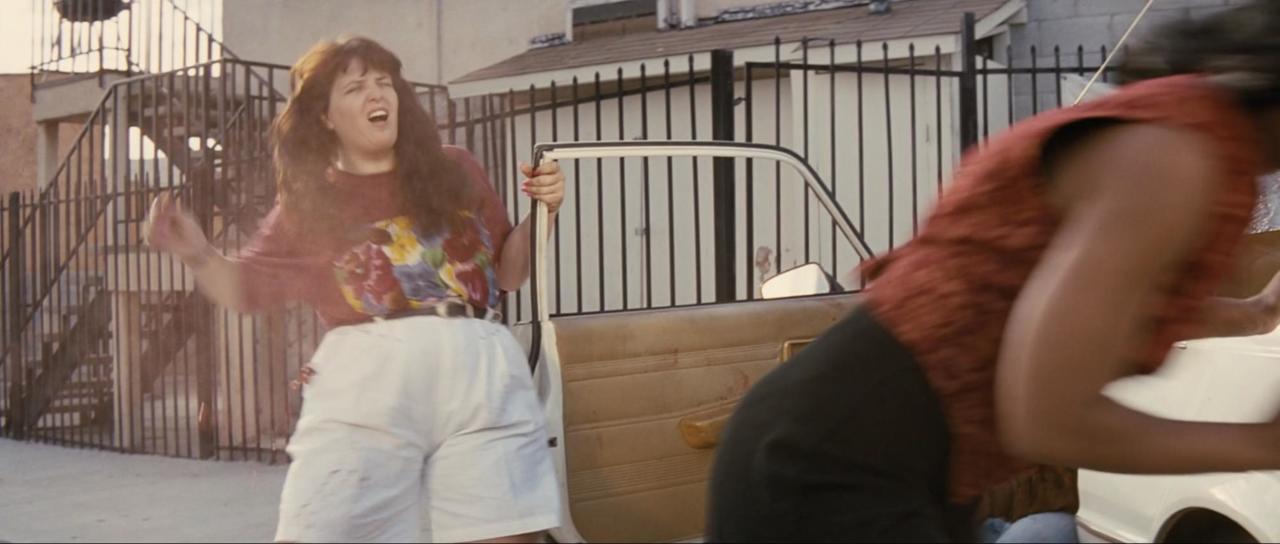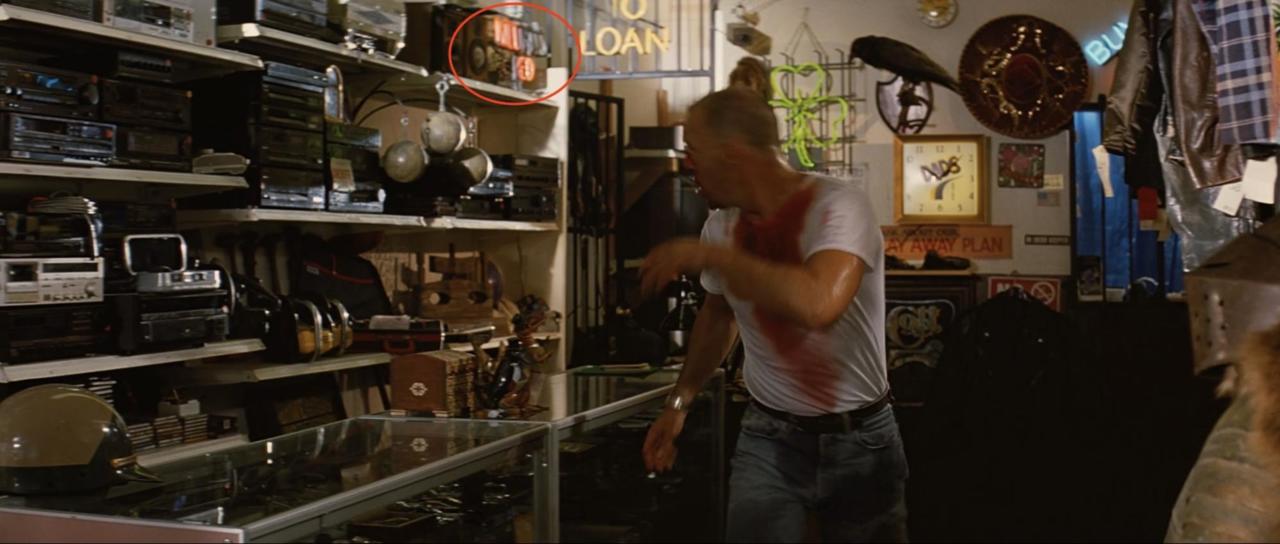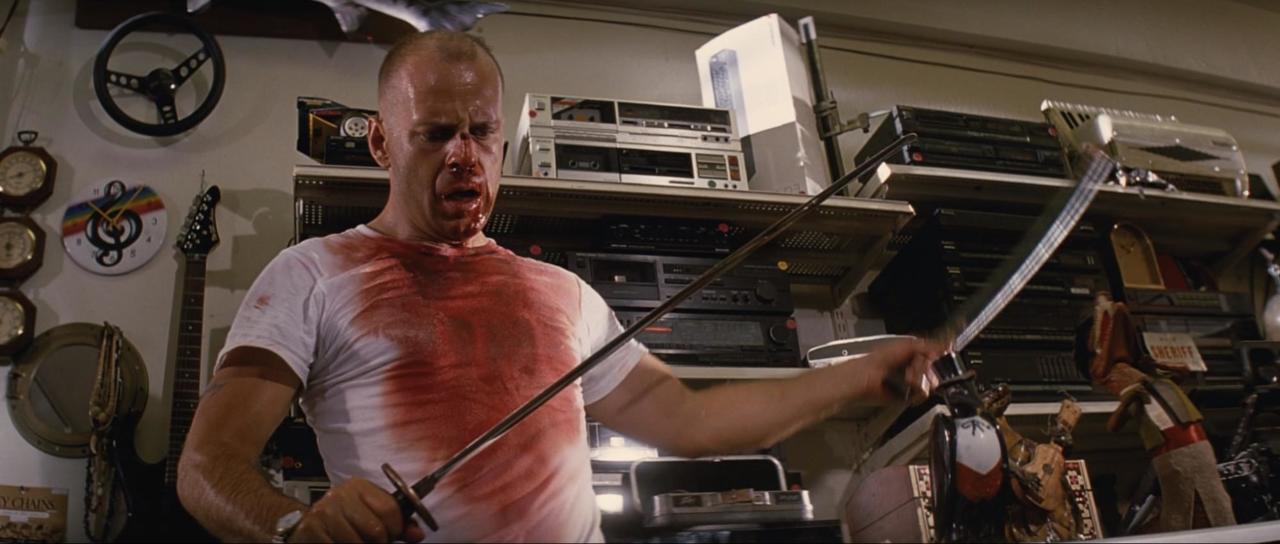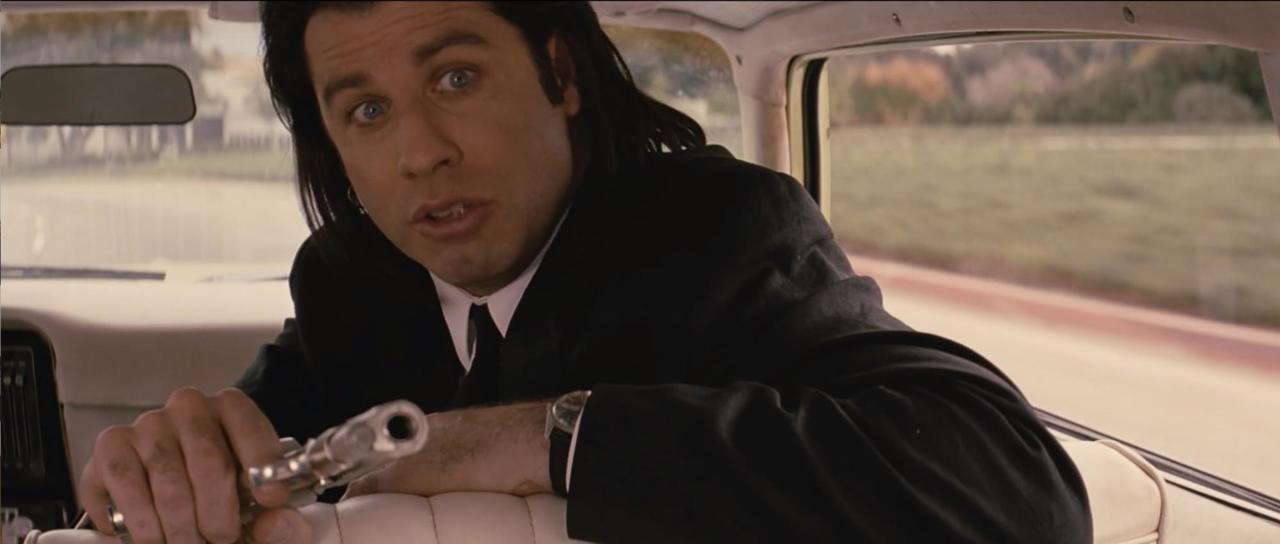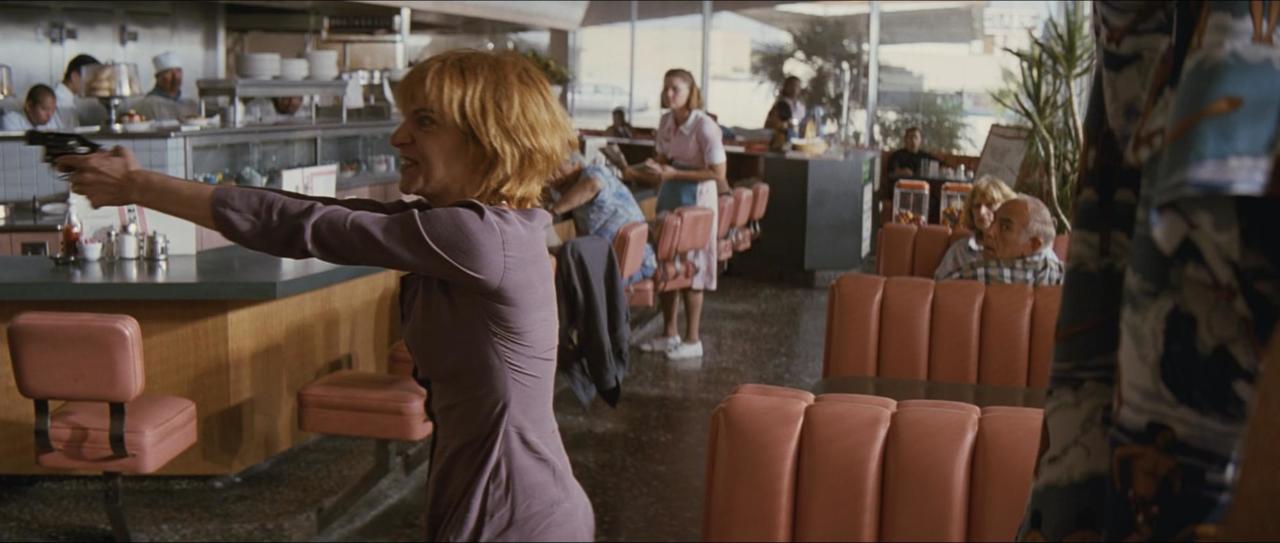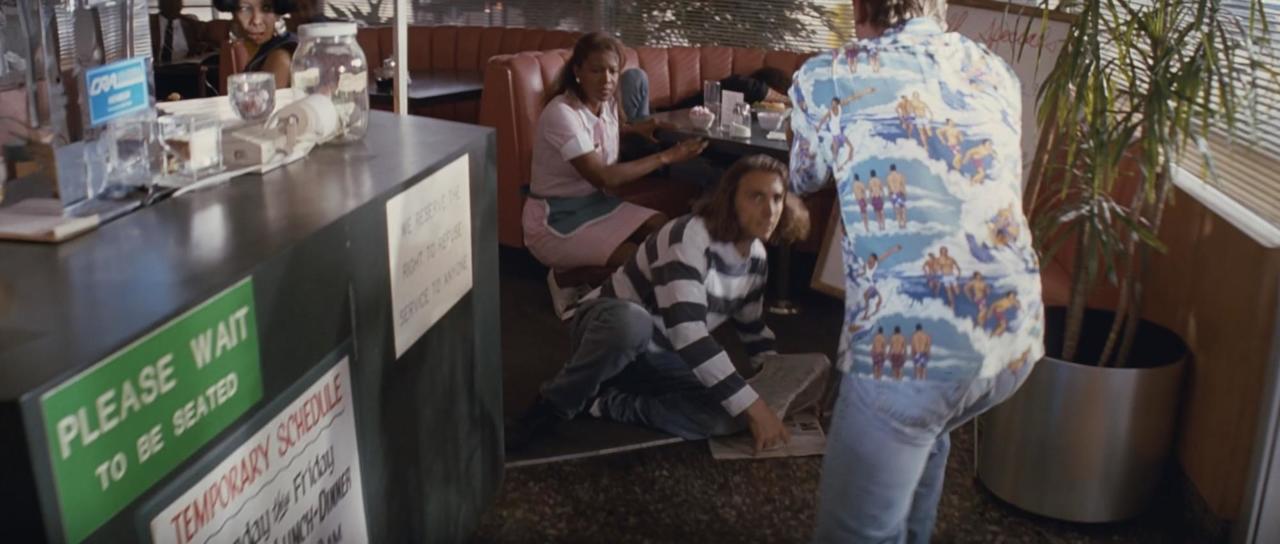Pulp Fiction Turns 25: All The Easter Eggs You Never Noticed In The Tarantino Classic
GameSpot may receive revenue from affiliate and advertising partnerships for sharing this content and from purchases through links.
Quentin Tarantino's second feature defined '90s film.
When Pulp Fiction first debuted, it was a shot of adrenaline straight to people's hearts. Its overarching themes--of karma, honor among thieves, and redemption--are well-worn. But the way those themes were explored was wholly original, especially in 1994.
Most prominent was Tarantino's love of grindhouse 'trash' cinema. He grew up in the '70s, when the film industry was rife with experimental, independent filmmakers who rose to prominence when the studio system (and its controlling monopoly over talent and box office returns) died.
With the fall of those establishment gatekeepers, who defined mainstream 'good taste,' came the rise of multiple niche genres: blaxploitation, pornography, spaghetti westerns, kung fu flicks--these types of movies were often accorded little respect at the time. But for a young Tarantino, they were formative films that defined his sensibilities.
Pulp Fiction took these old, derided genres from the '70s and remixed them for a modern audience. On top of that, Tarantino added layers and layers of clever, cool dialogue that he juxtaposed, with humorous effect, with violence, racism, and drug use. A casual discussion about McDonald's in France and foot massages would be interrupted by a murder. The tension of a hitman taking his boss's wife out to dinner would be undercut with a discussion about TV pilots and corny jokes.
There's a lot to appreciate in Pulp Fiction, and thus, there's also a lot to miss. Here, in honor of Pulp Fiction's 25th anniversary this October, are some of the more interesting Easter eggs and references that you might have missed in the Tarantino classic.
1. Personal Branding
Rather than using product placement in his films, Tarantino prefers to use his own, invented brands, which gives his movies a sense of whimsy and creates a vaguely shared universe between them. Pumpkin is smoking fictional Red Apple cigarettes in the movie's cold open. All of Tarantino's characters smoke this brand in his movies; in Kill Bill: Volume 1, you can see a massive Red Apple billboard in the background of the Tokyo airport. And the mid-credits scene for Once Upon a Time in Hollywood shows Rick Dalton taping a commercial for Red Apple cigarettes (which he apparently hates).
2. Who's That In The Background?
We find out, in a late twist, that Jules and Vincent go to the same diner that Honey Bunny and Pumpkin are planning to rob. If you rewatch the movie's opening, you can actually see Vincent walking to the bathroom, right before the robbery begins. And if you listen carefully prior to this, you can hear Jules talking about his "moment of clarity." There's no way you would have picked up on this the first time watching the film. But, clearly, Tarantino expected audience members to see this movie more than once.
3. A Soundtrack Shoutout
During the opening credits, the music undergoes a jarring but funny change when the name of the film's music supervisor, Karyn Rachtman, appears. You hear a radio dial sound effect, and the song switches to Kool & The Gang's "Jungle Boogie," as if Rachtman is manipulating the soundtrack in real time.
4. Amsterdam Versus America
The famous dialogue where Vincent tells Jules about his trip to Amsterdam is based in reality. Tarantino wrote for three months in Amsterdam in 1992; he returned to the States in the same year with a dozen notebooks filled with dialogue and storylines. These were later whittled down, streamlined, and shaped into Pulp Fiction.
5. The Signature Trunk Shot
Every Tarantino film has a "trunk shot," filmed from the perspective of someone looking up from a low angle. In Pulp Fiction, it's the scene where Vincent and Jules are getting their guns from the back of the car. Later films like Django Unchained, which took place in a time period prior to cars, have gotten more creative with including the signature shot. But it's there, for intrepid film buffs who know what they're looking for.
6. Big Kahuna Burger
Another fictional brand of Tarantino's, Big Kahuna Burger is a Hawaiian burger joint that has some "tasty burgers," according to Jules. Brett and his associates are having these burgers for breakfast when Vincent and Jules come to kill them. They're in several Tarantino films, particularly in Reservoir Dogs; Mr. Blonde makes a stop at Big Kahuna Burger before heading to the warehouse, as demonstrated by his soda cup.
7. Briefcase Combination
The combination to the mysterious briefcase, which Jules and Vincent retrieve from the apartment, is "666," which is the Number of the Beast. This has led to a wide variety of theories concerning the contents of the briefcase; more on that next.
8. What's Inside The Briefcase?
The real answer is "two batteries and a lightbulb," according to Samuel L. Jackson. But the glowing light has created some more fanciful theories. One of the most popular ones is that someone's soul is inside the briefcase--usually Marsellus Wallace's, and he's sending Vincent and Jules to get it back from him.
But the most straight-forward answer we'll probably ever get came from Roger Avary, who received a story credit on the film and also won the Oscar (along with Tarantino) for Best Original Screenplay for Pulp Fiction. In an interview with Roger Ebert's recurring column, Questions for the Movie Answer Man, Avary said the following:
"Originally the briefcase contained diamonds. But that just seemed too boring and predictable. So it was decided that the contents of the briefcase were never to be seen. This way each audience member would fill in the blank with their own ultimate contents. All you were supposed to know was that it was "so beautiful." No prop master can come up with something better than each individual's imagination. At least that was the original idea. Then somebody had the bright idea (which I think was a mistake) of putting an orange lightbulb in there. Suddenly what could have been anything became anything supernatural. Didn’t need to push the effect. People would have debated it for years anyway, and it would have been much more subtle."
9. Do You Read The Bible?
Before he kills someone, Jules recites his version of Ezekiel 25:17:
"The path of the righteous man is beset on all sides
By the inequities of the selfish and the tyranny of evil men.
Blessed is he who, in the name of charity and good will
Shepherds the weak through the valley of darkness
For he is truly his brother's keeper and the finder of lost children.
And I will strike down upon thee with great vengeance and furious anger
Those who attempt to poison and destroy my brothers.
And you will know my name is the Lord
When I lay my vengeance upon thee."
This is an extreme embellishment. The real Ezekiel 25:17 reads as follows, according to the King James interpretation of the Old Testament:
"And I will execute great vengeance upon them with furious rebukes
And they shall know that I am the Lord
When I shall lay my vengeance upon them."
Most people believe that Tarantino wrote the more fanciful version, but that's a common misconception; it's actually lifted, almost word-for-word, from Karate Kiba, a 1976 martial arts film starring Sonny Chiba. Chiba would later appear in Tarantino's Kill Bill: Volume 1 as master sword craftsman Hattori Hanzo.
10. The Bandage on Marsellus Wallace's Neck
As glimpsed in multiple scenes, Marsellus Wallace has a bandage on the back of his neck. At some point, this evolved into a widespread theory that Marsellus had his soul extracted from the back of his head, and his soul was inside the briefcase, which would explain the unnatural glow. The bandage actually covers a scar on the back of actor Ving Rhames' neck, which is visible in his other films.
11. Who Keyed The Car?
When Vincent is buying heroin from Lance, he complains that someone keyed his car. The culprit is actually Butch; in the scene prior to this one, Vincent disrespects him by calling him "Palooka" and "Punchy." Tarantino confirmed this detail during a radio interview with Opie and Anthony.
12. Piercing Payoff
There's a seemingly random conversation in the middle of the movie, where Jody talks about the multiple piercings on her body, which she did the "right" way with a needle. According to film critic Roger Ebert, this later explains why Jody is so happy during the adrenaline syringe scene. Vincent has to give Mia the "ultimate piercing" by stabbing her in the chest.
13. The Infamous Feet
When Vincent goes to pick Mia up, the camera zooms on Mia's bare feet. It's a callback to a conversation from earlier, when Jules and Vincent discuss a rumor: that Marsellus threw another man out a four-story window for massaging Mia's feet. Tarantino is very good at creating a sense of menace during this whole storyline; even if it's not explicitly stated, we know that Vincent is under an extreme amount of pressure to make sure this "not a date" goes well.
14. Elvis Man or Beatles Man?
The first time we see Mia's face is when they pull into Jack Rabbit Slim's, and Mia tries to hype it up by saying, "An Elvis man would love it!" This is a reference to a deleted scene, in which Mia, holding a handheld camcorder, interviews Vincent about his personal preferences. One of her questions is whether he's an Elvis man or a Beatles man--her theory is that people can like both artists, but no one likes them equally. This scene wasn't included in the film's final cut, but sometimes, it's added in when Pulp Fiction airs on network television.
15. A Who's Who of the 1950s
There's a parade of nostalgic references in Jack Rabbit Slim's. James Dean, in his Rebel Without a Cause red jacket, is a waiter; so are Zorro, Marilyn Monroe, Buddy Holly, and Mamie Van Doren. You can also see Dean Martin and Jerry Lewis hamming it up near the bar. Ricky Nelson is performing in the center of the restaurant. And Ed Sullivan is the maître d.
16. Hi. I'm Buddy.
The unenthusiastic Buddy Holly waiter is Steve Buscemi, who also starred as Mr. Pink in Tarantino's Reservoir Dogs. He asks Mia whether he wants her $5 shake to be Martin and Lewis (a white comedic duo = vanilla) or Amos 'n' Andy (a black comedic duo = chocolate).
17. This Feels Just Elegant!
Out of all the impersonators, the Marilyn Monroe impersonator looks uncannily similar to the real deal. She's wearing her iconic white dress from The Seven Year Itch, and she even recreates the moment when the steam from the subway grate blows up her dress. The woman playing Marilyn is Susan Griffiths, a well-known Marilyn Monroe impersonator who starred in the Las Vegas show Legends in Concert. She has also performed as Monroe or a Monroe impersonator in multiple bit roles on television and in film, including commercials, Nip/Tuck, and Curb Your Enthusiasm.
18. Fruit Brute
If you look in the background of Lance's apartment, you can see that Lance is eating a bowl of Fruit Brute cereal. This is a real-life, defunct brand of cereal. General Mills released a whole line of monster-themed cereals in the '70s, and although Count Chocula has survived to the present day, Fruit Brute, unfortunately, has not.
19. Board Games
Here's a little meta-joke. During the scene where Vincent brings Mia to Lance's house after she overdoses on heroin, you can see two board games stacked up on the table: Operation and Life.
20. Stab in Reverse
To film the scene where Vincent stabs Mia in the chest with the syringe, Travolta actually started with the needle at her chest, and then pulled it out. Tarantino then ran the footage in reverse to make it seem like a real stabbing.
21. Possible Pregnancy
We have a few clues that lead us to believe that Fabienne, Butch's girlfriend, is pregnant. She spends an entire monologue talking about how she thinks she would look sexy with a potbelly. Later, she wants to tell him something, but he falls asleep before she can tell him. And the following morning, she discusses the massive breakfast she wants to eat, which sounds a bit extreme--unless, of course, she's eating for two.
22. Butch's War
During the scene when Butch goes back to his apartment to get his watch, he skulks around the back, through brush and metal fences, to avoid the gangsters who want to kill him. This tracking shot is visually similar to a Vietnam War scene from Full Metal Jacket, where the troops are advancing on an enemy position. We learn earlier in the movie that Butch's gold watch is a war relic, worn by Butch's great-grandfather, grandfather, and father during combat. Tarantino is deliberately shooting this moment like a war movie to make a connection: that retrieving the watch is Butch's war, and that he's fighting for his birthright just as his forefathers did.
23. The Last Book He'll Read
When Butch shoots and kills Vincent, the book that Vincent is reading is Modesty Blaise, by Peter O'Donnell. Based on the comic strip of the same name, it tells the story of a female secret agent with a criminal past--certainly the sort of novel that Vincent, and by extension, Tarantino, would have read.
24. Twice Unlucky
The woman who Marsellus Wallace accidentally shoots is played by actress Linda Kaye. Kaye also played the woman who Mr. Pink carjacked in Reservoir Dogs by pulling her out of the driver's window.
25. Subliminal Messaging
When Butch is leaving the pawn shop, he passes by a partly-lit neon sign. The letters say "KILL ED." If you combine that with the Z on the chopper's keychain, you get KILL ZED. Zed is the name of the man in the basement who is raping Marsellus. It's a little subliminal messaging that may have helped sway Butch's conscience when he was debating whether or not to save his foe from a common enemy.
26. A Funny Song
The song that plays over the pawn shop scene is "Comanche" by The Revels. But that wasn't originally what Tarantino had in mind; he wanted The Knacks' "My Sharona." "[The song] has a really good sodomy beat to it," said Tarantino in an interview with Rolling Stone. "I thought, oh, God, this is just too funny not to use." But he ended up not using it, because the filmmakers behind romantic comedy Reality Bites also wanted to use it. In retrospect, Tarantino says he's glad he went with "Comanche," and that "My Sharona" would have been too overt.
27. Purposeful Or Accidental?
In the final third of the movie, Vincent accidentally shoots Marvin in the face and kills him. But originally, Vincent was supposed to accidentally shoot Marvin in the throat. Then, while Marvin was choking on his blood, Vincent would shoot him again, this time in the head, to put him out of his misery. Ultimately Tarantino decided to go with the single, accidental, explosive headshot, because Travolta lamented that the audience would hate Vincent's character if he killed Marvin on purpose, even if the first shot was accidental.
28. Subjective Storytelling
When Pumpkin threatens the diners, she uses a different line at the end of the movie than she does at the beginning of the movie, even though it's the exact same scene. One theory for why (aside from a simple continuity error) is that Tarantino is playing into the idea of unreliable narrators. The first time we see the scene, we're seeing it more objectively, from a neutral view. The second time we see the scene, Jules is leading the narrative.
29. Yuppie Scum
The "long-haired yuppie scum" that Pumpkin threatens under the table is producer Lawrence Bender, who produced all of Tarantino's films, from Reservoir Dogs to Kill Bill.
